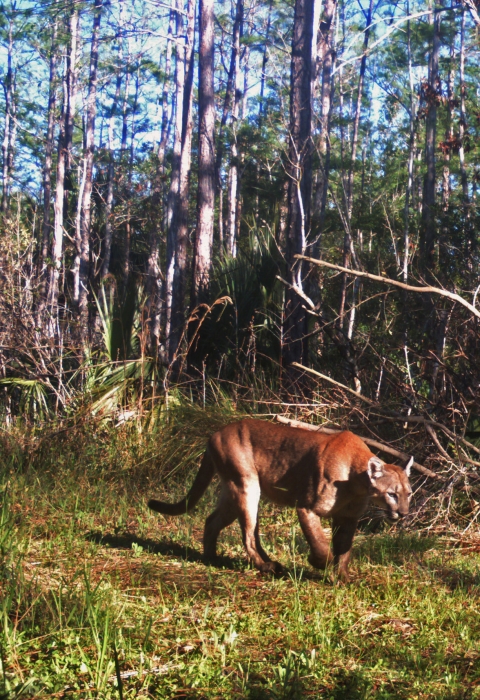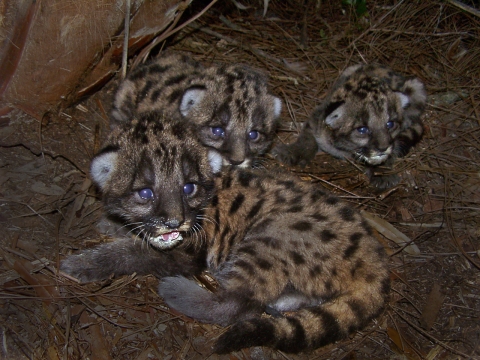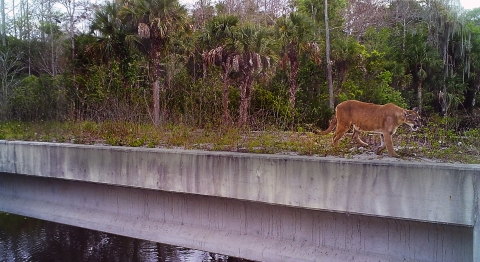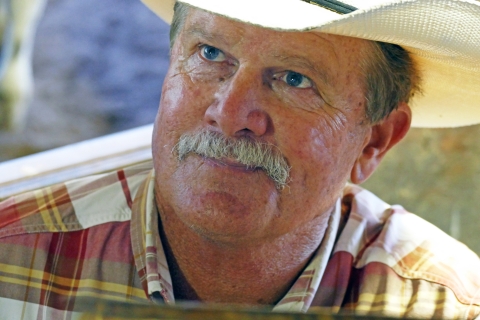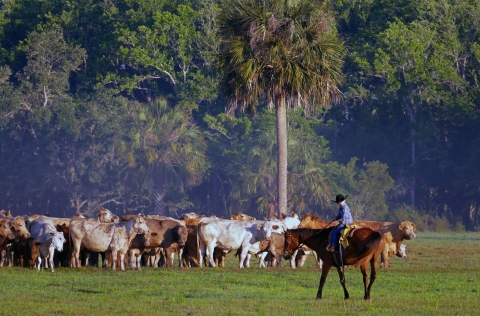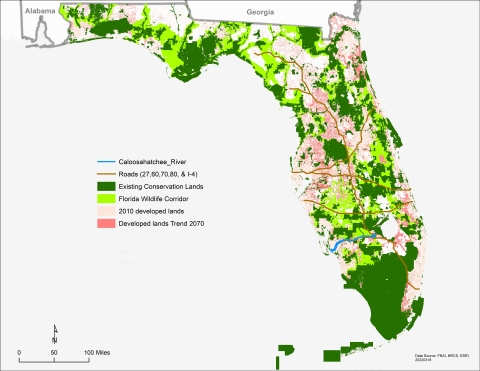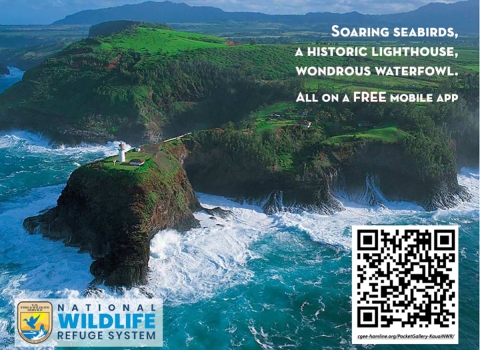In 50 years, the endangered Florida panther has made a long journey back from the brink of extinction. The population has rebounded from an estimated low of 10 animals to over 200 animals since it was put on the first Endangered species list in 1967.
Now the panther is at a crossroads.
Panthers, historically, roamed the entire southeastern United States. Development badly fractured their habitat. Hunting nearly eliminated them; genetic defects affected their health and survival. Eight female panthers were brought in from Texas in the 1990s and released in Florida to breed. It worked.
“Introducing the female Texas pumas into the population increased panther numbers, genetic diversity, and survival rates,” said David Shindle, Florida panther recovery coordinator for the U.S. Fish and Wildlife Service. A certified wildlife biologist, Shindle has made the Florida panther his career for more than 20 years. At this juncture, he said, the panther must expand its range northward.
That’s why, when a camera captured a female panther in 2017 leading her kittens north of the Caloosahatchee River -- for the first time in more than 40 years -- it was considered a milestone. “Increasing the range and size of the population is the progress of recovery,” Shindle said.
Panthers need a lot of space. Males claim 200-square-mile territories and will sometimes fight other males to death if their territories overlap. As their numbers rise, urban sprawl hems them in. Development, associated with an estimated 1,000 people moving to Florida every day, consumes and fragments panther habitat in southwestern Florida. It narrows escape routes from sea-level rise. With too little space, panthers may again succumb to genetic disorders and diseases.
The Caloosahatchee River flows west from Lake Okeechobee to Fort Myers and cuts the state in half, which discourages panthers from crossing to the north. It’s mostly rural, open land north of the river with privately owned properties and a mosaic of federal, state and conservation lands that together create critical corridors for panther recovery.
Yet new subdivisions generate more roads and highways. Vehicles kill more panthers than anything else. Last year, 21 died by automobile. The year before: 22. This year, already, eight panthers have been killed by cars.
Researchers and designers with the Florida Department of Transportation, the University of Central Florida, and the University of Florida are modeling future roadway crossings for panthers to be able to expand north. They use information collected in southwestern Florida – types of roads, where they cross, where they were hit, prey availability, habitat selection – to generate future crossing patterns further north. When a potential crossing is identified, cameras are set to verify the presence of wildlife.
Wildlife crossings include bridges, underpasses, box culverts, drainage pipes and shelves built under bridges. Fencing funnel panthers and other wildlife into the crossing and out of the roadway.
Currently, Florida Department of Transportation is building the Western Green Swamp crossing east of I-4 and SR 557, to be finished next year. Projects in the design phase awaiting construction funds are the I-4 wildlife overpass and SR 33 at Saddle Creek, US 27 near Lake Livingston, and the US 27 Venus Wildlife crossing. Construction of these crossings is tentatively scheduled within five years. Crossings the department has identified for design include one at SR 29 north of SR 78 and SR 66 south of Highlands Hammock.
If panthers can avoid Tampa and St. Petersburg, swim the Caloosahatchee River, cross state roads 27, 80, 70, 60 and Interstate 4, and stay away from Orlando, they will have a fighting chance. Federal, state and conservation lands will protect them as the habitat is managed for wildlife. Ranches comprise much of this rural land, where conservation easements protect excellent panther habitat. Military installations at Avon Park and Camp Blanding provide safe spaces too.
The Service and the Florida Fish and Wildlife Conservation Commission (FWC) have worked through the years with nonprofit organizations and other government agencies to create conservation corridors to expand the panthers’ range, increase their numbers and help them migrate. FWC is the lead agency on the research and management of the Florida panther.
“It can be done with the green infrastructure that we have,” said Elizabeth Fleming, Senior Florida Representative for Defenders of Wildlife.
Fleming has worked with the Service and the Panther Recovery Implementation Team for almost a decade. Her nonprofit has been involved in Florida panther advocacy protection before it was even listed as endangered. She is hopeful.
“We have had great success, resulting in a much healthier, growing population. Now the success of our conservation efforts is meeting the barriers of habitat, traffic, and colliding with the human population,” Fleming said. “We need education to expand acceptance for panthers and to reduce conflict.”
Shindle said the goal is to have a viable population that can survive on its own and eventually recover to the point it can be removed from the Endangered Species List.
“That is what everyone is striving for,” said Mark Lotz, a FWC panther biologist, he has worked on the panther recovery team for 27 years, dealing extensively with landowners. As the population has increased, so too have depredation complaints about panthers – up to a high of 62 in 2017. He adds, though, that there have been fewer complaints in recent years and instances of human-panther interactions have been infrequent.
Cary Lightsey is a sixth-generation rancher who believes we can share the land with the panther. “We need to protect the panther. It’s part of the balance of nature,” he said. “It’s part of Florida and I don’t want to lose it.”
For the last eight years, Lightsey has watched a female panther and her twins in his citrus grove on Tiger Lake Ranch. She returns every year and has twins. When the kittens lose their spots, they leave.
Lightsey has put 92 percent of his land in conservation easements. “I don’t want it to be developed, ever,” he said. “I want to stay family ranchers, and my whole family feels the same way.”
Recently, he took two of his granddaughters to the Polk County Commission meeting to propose a tax for conservation easements. He noted that 58,000 people had moved into the county in just the last year and development follows right behind them. “It passed. Everyone voted for it,” he said.
The Service’s Shindle, when he does outreach presentations, tells folks to find common ground. "Ranching families want to preserve their heritage for future generations and the panther needs these working ranchlands to survive. To save the panther, you need to save the rancher," he said.
State land acquisition programs such as Florida Forever and the Rural and Family Lands Protection Program preserve panther habitat through conservation easements. Federal programs help acquire conservation easements and preserve agricultural lands with wildlife values. These programs provide matching funding for landscape-scale conservation projects with other governmental and non-profit organizations.
The Florida Wildlife Corridor Act that passed last year specifies a network of green spaces for wildlife and the panther that encompasses 18 million acres, with 10 million protected federal, state, local and conservation lands. The legislation provides some funding to purchase conservation easements or to acquire land.
Enhancing conservation corridors could provide protected habitat for 74 federally and state listed threatened and endangered species and many other species of native wildlife. It could provide perpetual habitat protection, improving connectivity and reducing habitat fragmentation which can assist species adapt to the effects of climate change climate change
Climate change includes both global warming driven by human-induced emissions of greenhouse gases and the resulting large-scale shifts in weather patterns. Though there have been previous periods of climatic change, since the mid-20th century humans have had an unprecedented impact on Earth's climate system and caused change on a global scale.
Learn more about climate change and the threat of development. With an established corridor the Florida panther can head northward on its journey to open lands and away from extinction.
Assistance programs
More resources
Read the interactive story here
Florida Panther Safety Factsheet (English/Español) | U.S. Fish & Wildlife Service (fws.gov)
